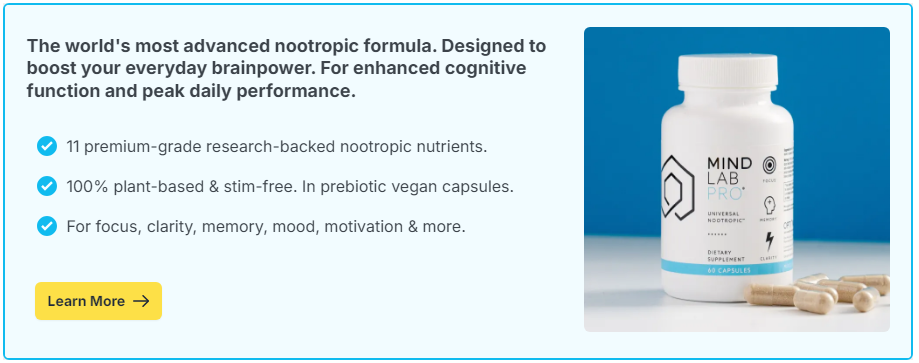
Imagine trying to untangle a knot — not by pulling on the ends, but by tracing the thread backward from its deepest twists.
Now imagine approaching a stubborn problem the same way: backward, upside-down, inside-out.
Welcome to the world of reverse cognition — the art of thinking backwards to spark creativity, expose hidden assumptions, and generate breakthroughs when forward logic falls short.
Far from being a gimmick, reverse thinking taps deep into the brain’s pattern-recognition and problem-solving capabilities — offering fresh pathways where linear thinking often stalls.
Contents
- What Is Reverse Cognition?
- The Neuroscience Behind Thinking Backwards
- Why Thinking Backwards Enhances Problem-Solving
- Real-World Examples: Reverse Thinking in Action
- Brain Supplements: Supporting Cognitive Flexibility and Strategic Thinking
- Practical Techniques for Strengthening Reverse Cognition
- When Reverse Thinking Becomes a Liability
- Reverse Thinking in Daily Life: Small Shifts, Big Payoffs
- Walking Backward Into Brilliance
What Is Reverse Cognition?
Reverse cognition refers to intentionally approaching a situation, problem, or idea by mentally retracing steps, imagining outcomes first, or working backwards from a desired result rather than forward from the beginning.
Common Forms of Reverse Thinking
- Backward Planning: Defining an endpoint and mentally walking back the steps needed to reach it.
- Counterfactual Reasoning: Imagining how past events could have unfolded differently.
- Inversion Problem-Solving: Thinking about what could cause failure, then designing solutions to prevent it.
- Reverse Brainstorming: Generating ideas by asking, “How could we make this worse?” to reveal hidden vulnerabilities or assumptions.
Reverse thinking isn’t about being contrarian — it’s about unlocking new dimensions of understanding and possibility.
The Neuroscience Behind Thinking Backwards
Several key brain systems support reverse cognition and enhance its effectiveness for insight generation.
Key Neurological Systems
- Prefrontal Cortex: Governs abstract reasoning, strategic planning, and counterfactual thinking.
- Default Mode Network (DMN): Activates during imagination, memory retrieval, and creative reflection.
- Hippocampus: Supports mental time travel — projecting the mind backward (or forward) across events and possibilities.
When you think backwards, you engage mental pathways that are often quieter during goal-directed, linear cognition — opening doors to fresh insights.
Why Thinking Backwards Enhances Problem-Solving
Stuck problems often resist forward assault because our assumptions, biases, and mental habits keep us trapped on familiar paths.
Reverse Thinking Advantages
- Breaks Habitual Patterns: Forces reconsideration of taken-for-granted assumptions.
- Clarifies True Objectives: By focusing first on the end state, priorities sharpen.
- Exposes Hidden Dependencies: Tracing outcomes backward reveals critical but overlooked steps.
- Encourages Playful Flexibility: Turning problems upside-down invites divergent, creative thought.
Sometimes, the best way forward is a few clever steps in reverse.
Real-World Examples: Reverse Thinking in Action
Some of the world’s most transformative breakthroughs owe their success to people willing to think backwards when others stayed stuck going forward.
Examples
- Space Exploration: NASA engineers often use “failure mode” analysis — imagining how missions could go wrong — to design safer spacecraft.
- Medical Diagnosis: Doctors sometimes start with symptoms and “reverse engineer” possible causes rather than starting with disease categories.
- Business Strategy: Amazon’s “working backwards” model begins by imagining the ideal customer experience, then designing products to fit that future reality.
- Creative Arts: Writers like Agatha Christie often plotted their novels by starting with the final twist and constructing the story backward.
Innovation often favors those willing to walk backward into the unknown.
Brain Supplements: Supporting Cognitive Flexibility and Strategic Thinking
Some individuals support mental agility and strategic creativity with nootropic supplements designed to enhance executive function, working memory, and neural plasticity.
Ingredients such as citicoline, bacopa monnieri, and rhodiola rosea are studied for their potential to boost mental flexibility, resilience, and insight — all crucial for reverse thinking strategies.
Always consult a professional before beginning any supplementation plan.
Practical Techniques for Strengthening Reverse Cognition
You can cultivate your backward thinking skills through simple, deliberate practices woven into daily life and creative challenges.
Reverse Thinking Exercises
- Backward Planning: Visualize a future goal fully achieved, then map steps needed in reverse to where you are today.
- Problem Inversion: Instead of asking “How can I solve this?”, ask “How could I cause or worsen this problem?” to reveal blind spots.
- End-to-Start Storytelling: Write or tell stories that begin with the final scene, then unfold how it happened.
- Reverse Learning: After mastering a skill, try “unbuilding” it mentally — deconstructing the steps you once learned automatically.
- Alternate Histories: Reflect on historical events by asking, “What small change might have produced a different outcome?”
Reverse cognition isn’t just clever.
It’s transformational — revealing new dimensions of thought with every backwards step.
When Reverse Thinking Becomes a Liability
Like any cognitive tool, backward thinking has limits — and knowing when to re-align with forward motion is key.
Potential Pitfalls
- Overcomplication: Getting trapped in infinite hypothetical loops instead of moving toward action.
- Negative Rumination: Using reverse thinking to endlessly replay regrets rather than build solutions.
- Paralysis by Analysis: Failing to transition back to decisive, forward progress after reverse exploration.
Skillful reverse thinkers know when to turn — and when to turn back around and move ahead with new clarity.
Reverse Thinking in Daily Life: Small Shifts, Big Payoffs
Even simple, everyday uses of backward cognition can sharpen insight and agility across all aspects of life.
Everyday Applications
- Time Management: Plan your day by imagining yourself reflecting at the end — what would make you feel proud, rested, accomplished?
- Relationships: Consider how you’d want a conflict remembered years from now — and let that backward glance shape your words today.
- Learning: Teach yourself by imagining first explaining the topic to someone else, then backtracking to the foundational knowledge needed.
Reverse cognition doesn’t require grand problems — it thrives wherever imagination and curiosity meet daily life.
Walking Backward Into Brilliance
When stuck, tired, or confused, it’s natural to push harder forward.
But sometimes the wisest move is to pause, turn around, and retrace — not out of defeat, but out of daring.
Because in the backwards glance, the untraveled detour, the rewoven thread — there, insight waits.
So when the way ahead looks dim, don’t be afraid to walk backwards a few steps.
You may just find that the view from reverse reveals a whole new horizon.

